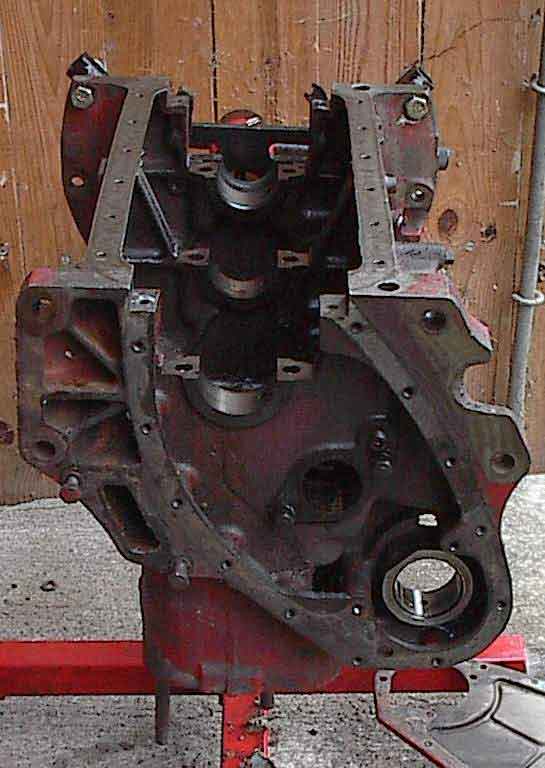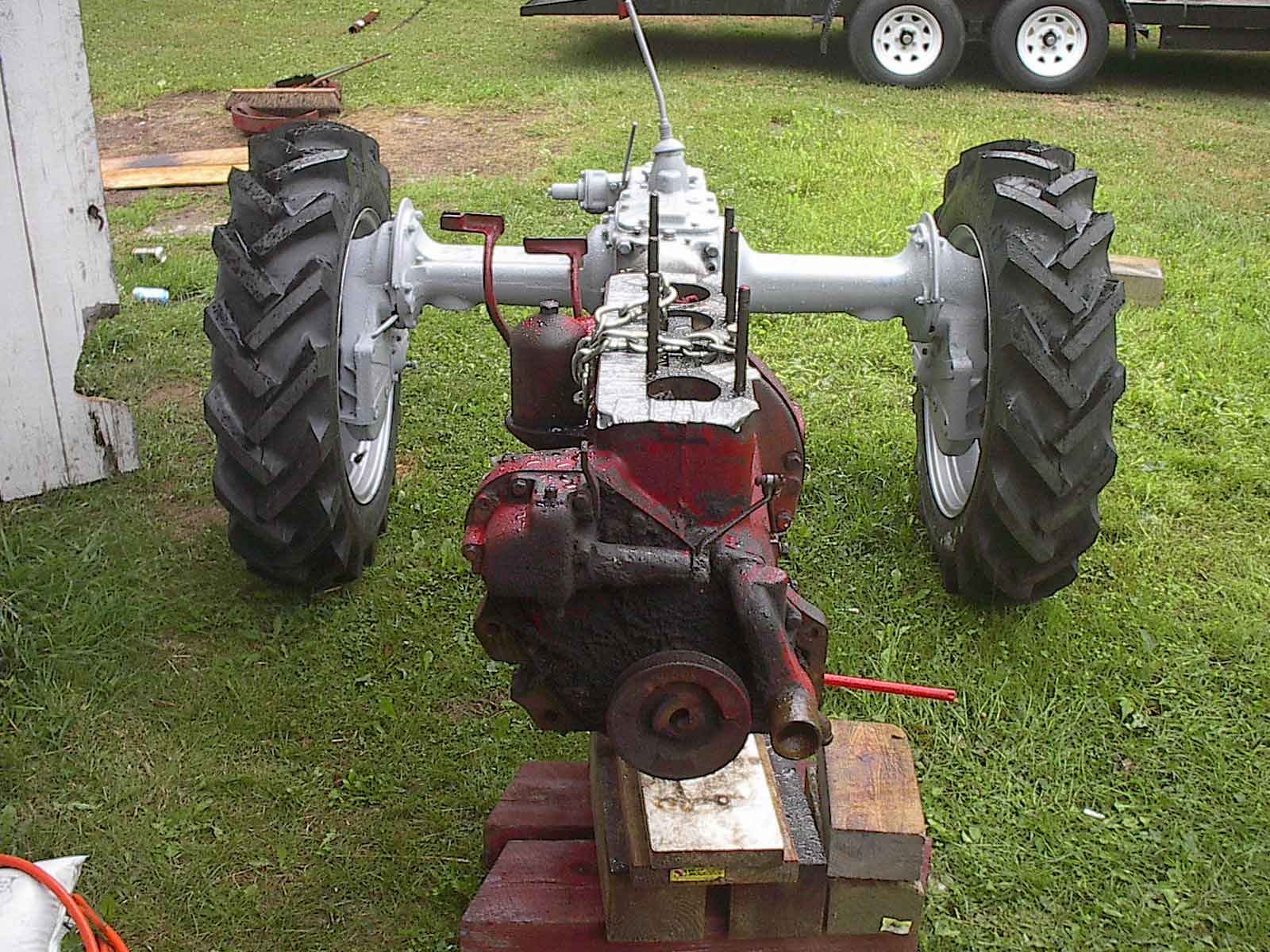
The first step was to remove the front end. This was done with the engine
hoist after removing just four bolts and exposed the very dirty front of
the engine. The cooling inlet is to the right of the pulley. The governor
is above and to the left. The engine head is off and, I've replaced two
of the studs on top of the block with bolts through washers and a chain
in preparation for the lift. The front end will be cleaned up and primed
much as the rear end was.
|

Six more bolts and here is the motor, free and clear. I removed the clutch
and flywheel from what is the right end in this picture and mounted the
whole works to an engine stand for cleaning up and tearing down.
|

IH Part No. 642 539 R2, the obligatory mouse nest in the torque tube. Every
Farmall has one. Exhaustive research in the International Harvester archives
now kept at the Wisconsin State Historical Society discloses that this
part, though an official IH accessory, was not installed at the factory,
but was more commonly a field installation.
|
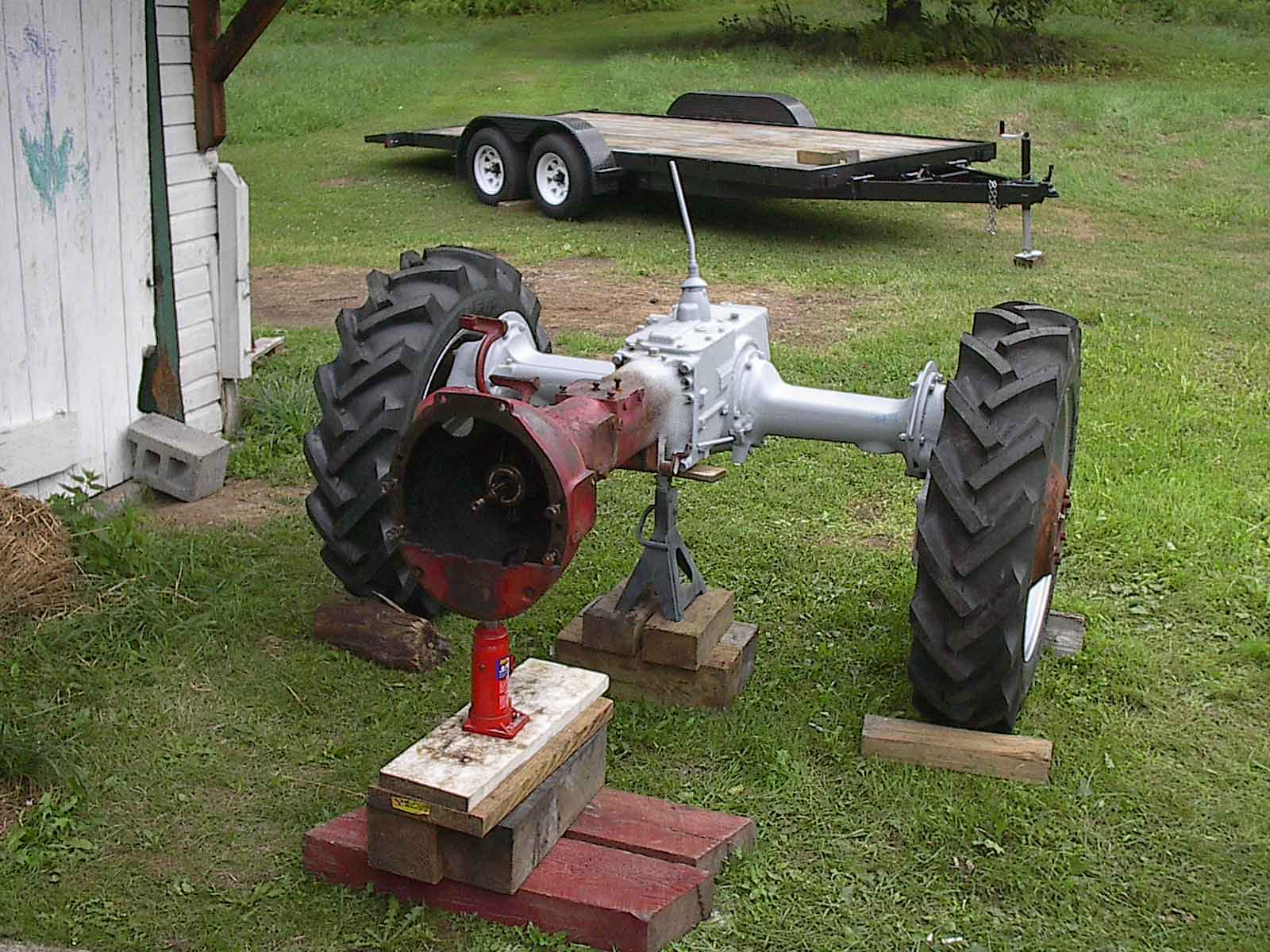
This is what is left outdoors. The torque tube will come off next. I'll
probably sandblast and prime it at the same time I do the replacement wheel.
I could have done that on the tractor as part of the rear end project,
but I still have to replace the seal where the driveshaft passes into the
transmission, and that requires removal of the torque tube for access.
Besides, I'll be using a much more aggressive abrasive to deal with the
pitting under the battery box, and I don't want that stuff anywhere near
the rest of the project.
|
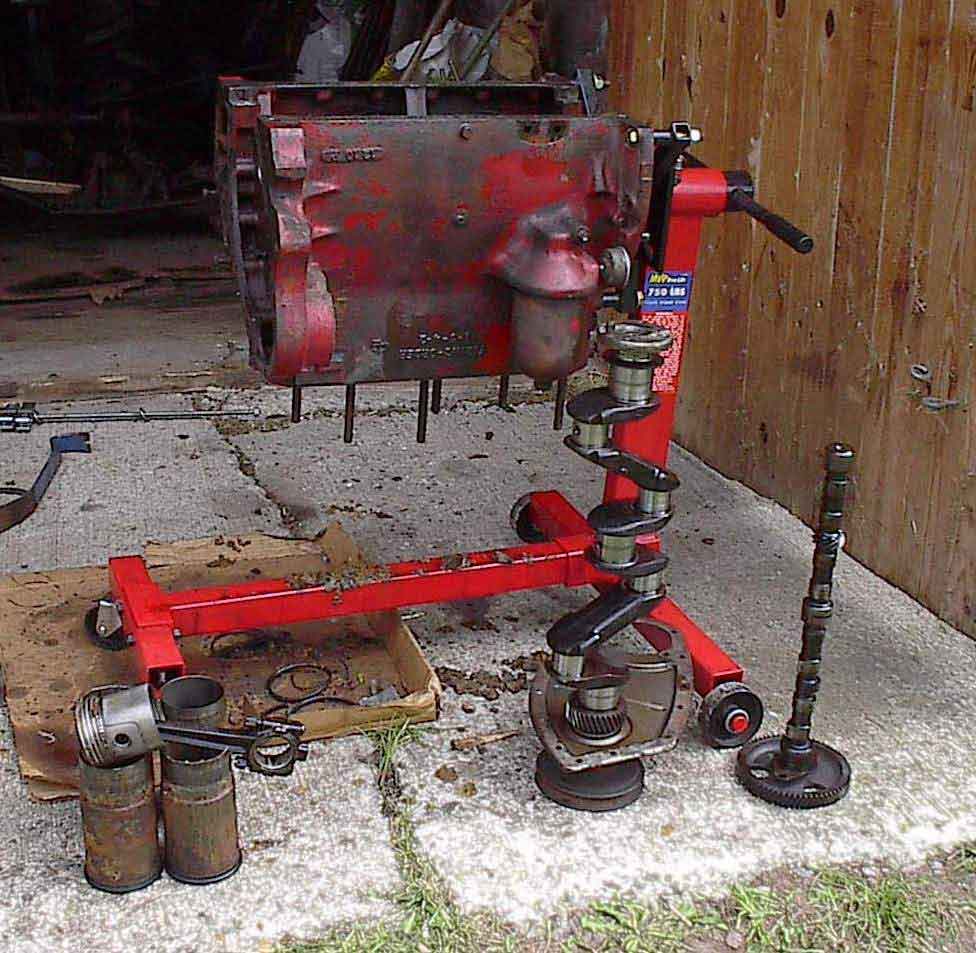
It took a couple more hours to get to this point.The crank and cam came
out without a lot of fuss, as did the first and fourth pistons and rods.
Two and three had taken on rainwater in the six years that the tractor
set out with the exhaust open and were frozen tight. The number three piston
drove out hard. Number two was stuck so fast that the piston never moved
and I drove out sleeve, piston and all. I wound up abandoning the hammers,
and had to cut that last sleeve apart with an angle grinder to get my connecting
rod back.
|
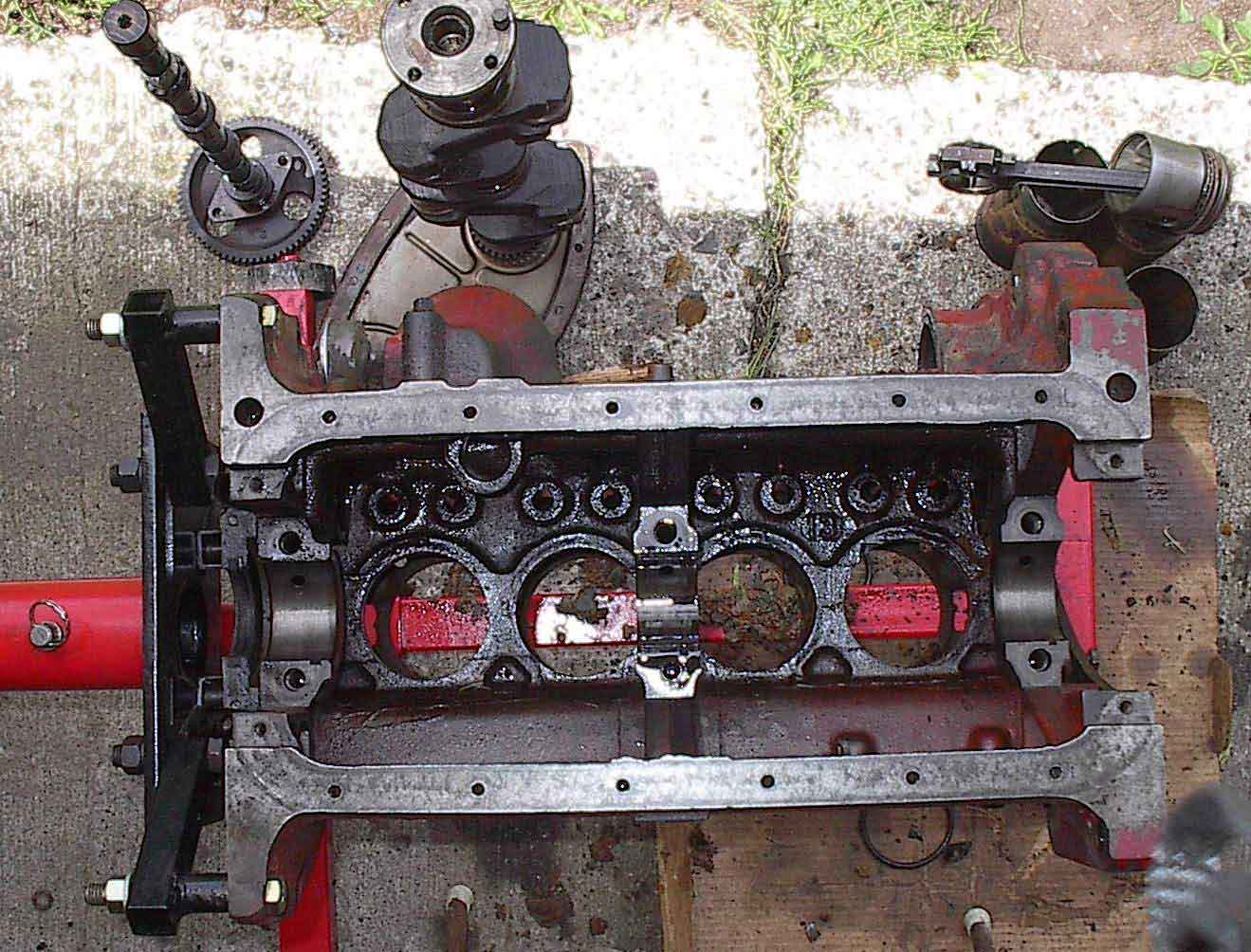
The engine was rebuilt by a high school shop about twenty years ago, and
was never worked much, and certainly not worked hard, after that. I was
pleased to find the crankshaft to be in good shape, and things generally
pretty clean inside -- certainly cleaner than the SuperC was when I opened
it up. The crank can go right back in with new bearings. This view from
above looks into the bottom of the engine. The shiny black stuff around
where the sleeves fit through is not sludge, but oil on a rough part of
the casting. The slight orange on the lower right inside is a paint type
sealer to keep oil from seeping into the iron. It has been wiped clean
and is a more accurate indication of the condition of the lower half of
the engine. The upper side, where the coolant flows, has a lot of sludge.
I'll scrape the heavy stuff away and put the pressure washer to it.
|






